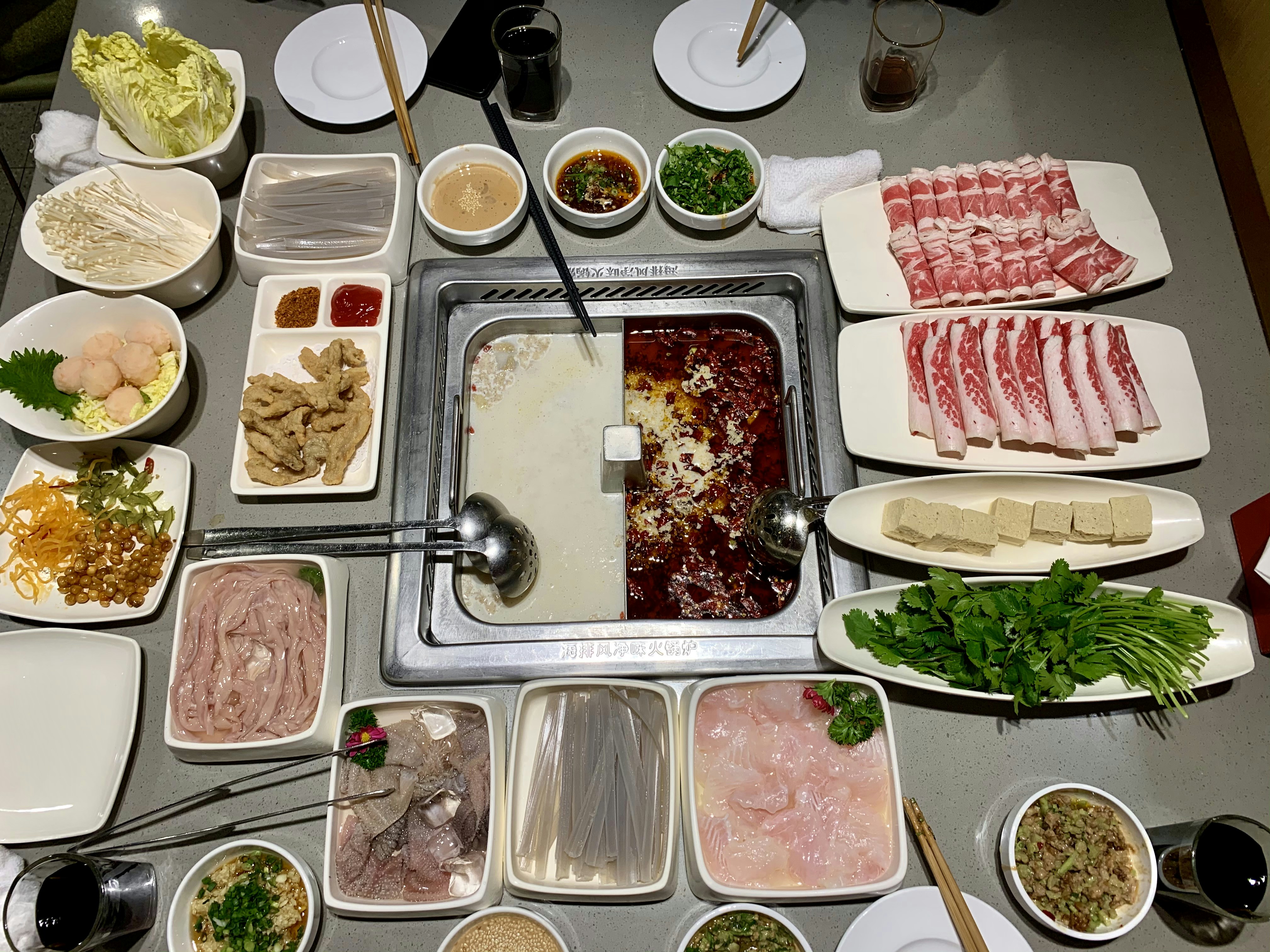Understanding Hot Pot: An Introduction
Hot pot is a traditional cooking and dining method that originated in ancient China, gaining popularity across various cultures. This communal meal typically involves a pot of simmering broth placed at the center of the table, where diners have the opportunity to cook their own ingredients. The act of preparing and sharing the meal creates a unique social experience, fostering interaction and connection among participants. Over the years, hot pot has evolved into numerous regional variations, each with its unique flavors and ingredients.
The cultural significance of hot pot cannot be overstated. In many Asian societies, it symbolizes togetherness and familial bonds, often enjoyed during special gatherings and celebrations. Families and friends gather around the hot pot, sharing stories and savoring the process of cooking. This aspect of communal dining is one of the critical elements that sets hot pot apart from other dining experiences, making it a cherished tradition in many households.
Hot pot can be found in various styles across the globe. The most well-known variant, Chinese hot pot, can be divided into different regional styles such as Sichuan’s spicy hot pot, known for its bold flavors and heat, and Cantonese hot pot, which emphasizes fresh, subtle tastes. Other adaptations include Japanese shabu-shabu and Korean jeongol, each contributing its own twist to the cornerstone concept of hot pot. The choice of ingredients is extensive, with options ranging from thinly sliced meats and vegetables to seafood and noodles, allowing diners to customize their meals to their preferences.
In essence, hot pot offers not only a delicious and versatile dining option but also a memorable experience that encourages connection and engagement among those who partake in it. Its rich history and cultural importance make it a notable aspect of culinary tradition around the world.
Essential Ingredients for Your Hot Pot
Hot pot is a versatile and communal dining experience that relies heavily on quality ingredients. To create a satisfying meal, it is important to consider the essential categories of ingredients: proteins, vegetables, noodles, and broths. This ensures variety and flavor in every bite.
For proteins, common choices include thinly sliced beef, pork, and lamb, which provide rich flavor and tender textures when cooked quickly in the bubbling broth. Seafood, like shrimp, scallops, and fish fillets, also makes a great addition, offering a lighter taste. Tofu is an excellent protein alternative for vegetarians; it absorbs the broth’s flavors beautifully and adds a creamy texture. It is advisable to choose fresh or high-quality frozen proteins, as they greatly impact the overall taste of the hot pot.
When it comes to vegetables, options abound. Leafy greens such as spinach, bok choy, and napa cabbage are popular for their crispness and quick cooking time. Mushrooms, including shiitake, enoki, and oyster mushrooms, impart a rich umami flavor that enhances the dish. Root vegetables like radishes, potatoes, and corn add heartiness to the meal, while fresh herbs can brighten the flavor profile.
Noodles are another essential component, providing a satisfying texture. Options include rice noodles, egg noodles, and udon, all of which soak up the broth’s delicious flavors. Finally, a flavorful broth forms the backbone of your hot pot. Chicken, beef, seafood, or vegetarian broths can serve as bases, with the option of enhancing them with spices and aromatics for added depth.
In selecting ingredients, fresh options usually yield superior flavor and texture. When purchasing, look for vibrant colors and firm textures. Frozen ingredients can be convenient, but ensure they are properly frozen and thawed to maintain quality. By carefully selecting the right combination of ingredients, you set the stage for an enjoyable and hearty hot pot experience.
Utensils and Equipment Needed for Hot Pot
Creating an enjoyable hot pot experience at home requires a selection of essential utensils and equipment. The cornerstone of your setup is a portable gas stove or an electric hot pot. The choice between these two options may depend on personal preference, space availability, and whether you want the flexibility to use it outdoors. A portable gas stove is ideal for bigger gatherings and outdoor settings, as it allows for higher heat control. Conversely, an electric hot pot can be a practical choice for indoor use, providing ease of operation and often featuring adjustable temperature settings.
In addition to the heating apparatus, having a ladle is crucial for serving the broth and retrieving cooked ingredients. This tool comes in various materials such as stainless steel or heat-resistant silicone, providing options based on your cooking style and aesthetic preferences. To ensure every guest enjoys their meal, individual dipping bowls are essential. These bowls allow diners to concoct their sauces and manage the ingredients they wish to cook. A set of chopsticks is also required, as this utensil is intrinsic to the hot pot experience, enabling diners to pick up ingredients with ease.
For those who wish to streamline their cooking process, consider multi-functional utensils such as mesh strainers or slotted spoons. These tools can assist in both scooping cooked items and draining excess broth. Furthermore, when selecting your hot pot equipment, it’s wise to consider the size of your dining space and the number of guests you typically entertain. A well-thought-out arrangement will enhance your hot pot experience, making it not only accessible but also enjoyable for all participants. Proper equipment and utensils play a significant role in elevating the overall hot pot dining experience.
Preparing and Cooking Your Hot Pot
To successfully prepare and cook your hot pot, start with the broth, which is the foundation of the dish. You may choose a store-bought broth or create a homemade version by simmering meats, vegetables, and spices for several hours. Popular choices include chicken, beef, or a spicy Sichuan broth. Begin by placing bones or meat in a pot filled with water, adding aromatics like ginger, garlic, and scallions, and letting it simmer until the flavors meld. This typically takes about 1-2 hours. Once the broth is ready, strain it into your hot pot vessel, ensuring a clean and flavorful base.
Next, focus on preparing the ingredients. This involves washing, chopping, and marinating various items. Fresh vegetables such as leafy greens, mushrooms, and root vegetables should be thoroughly washed to remove any dirt. Cut the vegetables into bite-sized pieces for convenient cooking. Proteins, including thinly sliced meats, seafood, or tofu, should be prepped as well. Marinating the proteins with herbs, soy sauce, sesame oil, or other seasonings can enhance the overall flavor before they are cooked in the simmering broth.
Assemble your dining area to create an inviting atmosphere for your guests. Place the hot pot in the center of the table along with a portable burner or an electric hot pot for easy cooking. Arrange the prepared ingredients around the pot, ensuring they are easily accessible. Provide guests with individual dipping bowls for sauces and condiments. Typical options include soy sauce, spicy chili paste, or a sesame dipping sauce. It is crucial to consider cooking times for each ingredient, as vegetables often require less time than meats. By educating your guests about recommended cooking durations, everyone can enjoy perfectly cooked items. Finally, encourage everyone to experiment with different combinations of ingredients and sauces for a personalized hot pot experience, ensuring a memorable gathering.


Leave a Reply